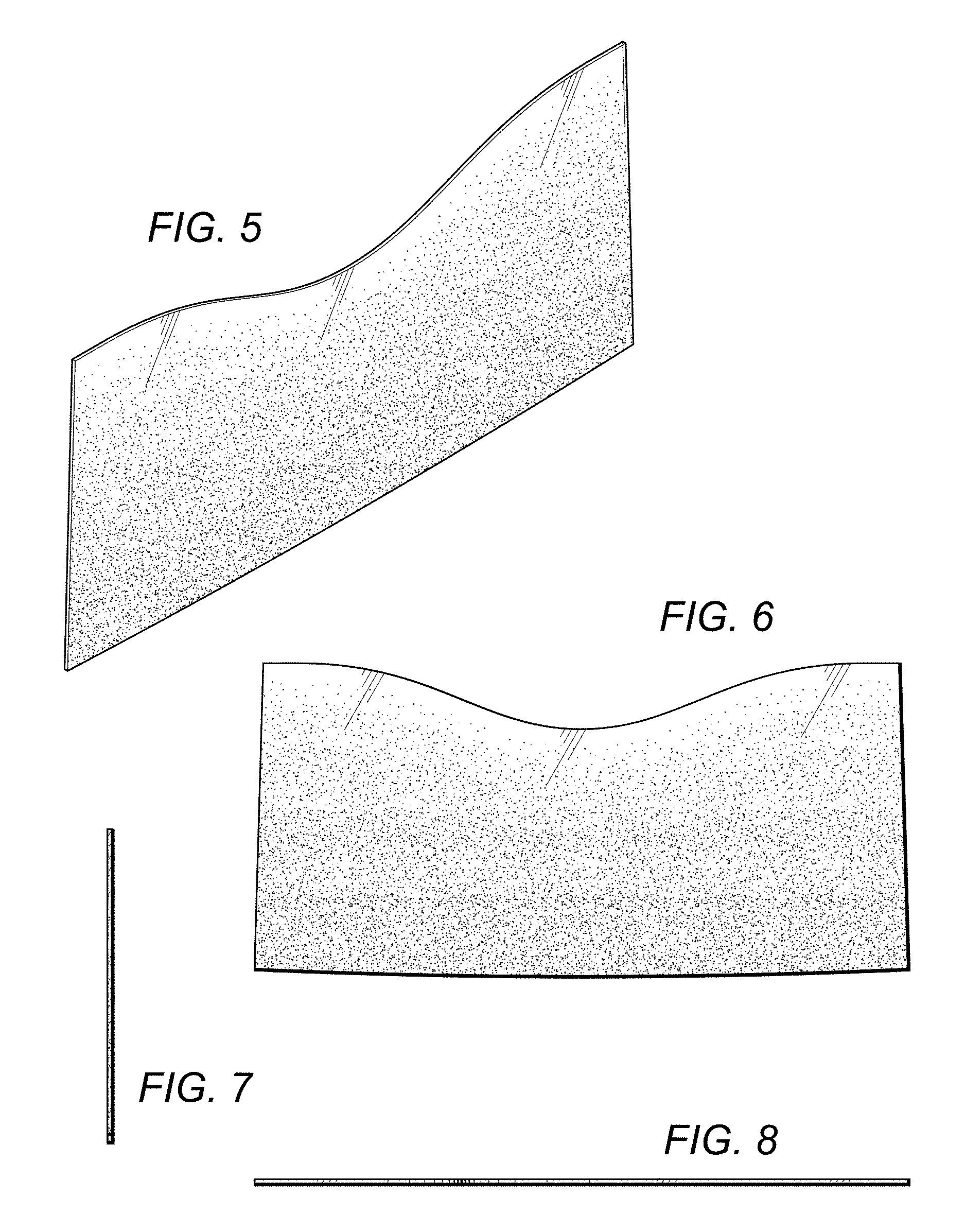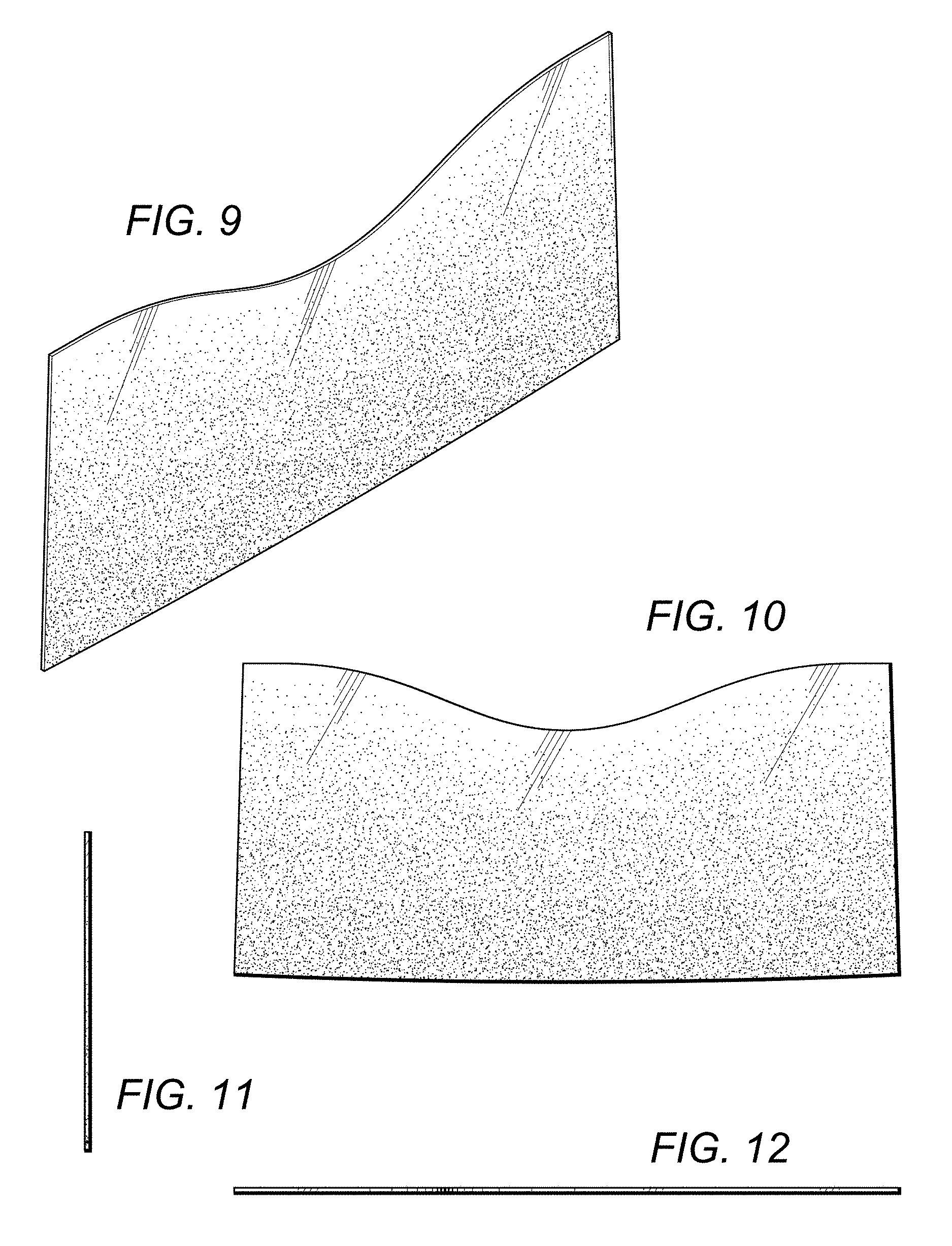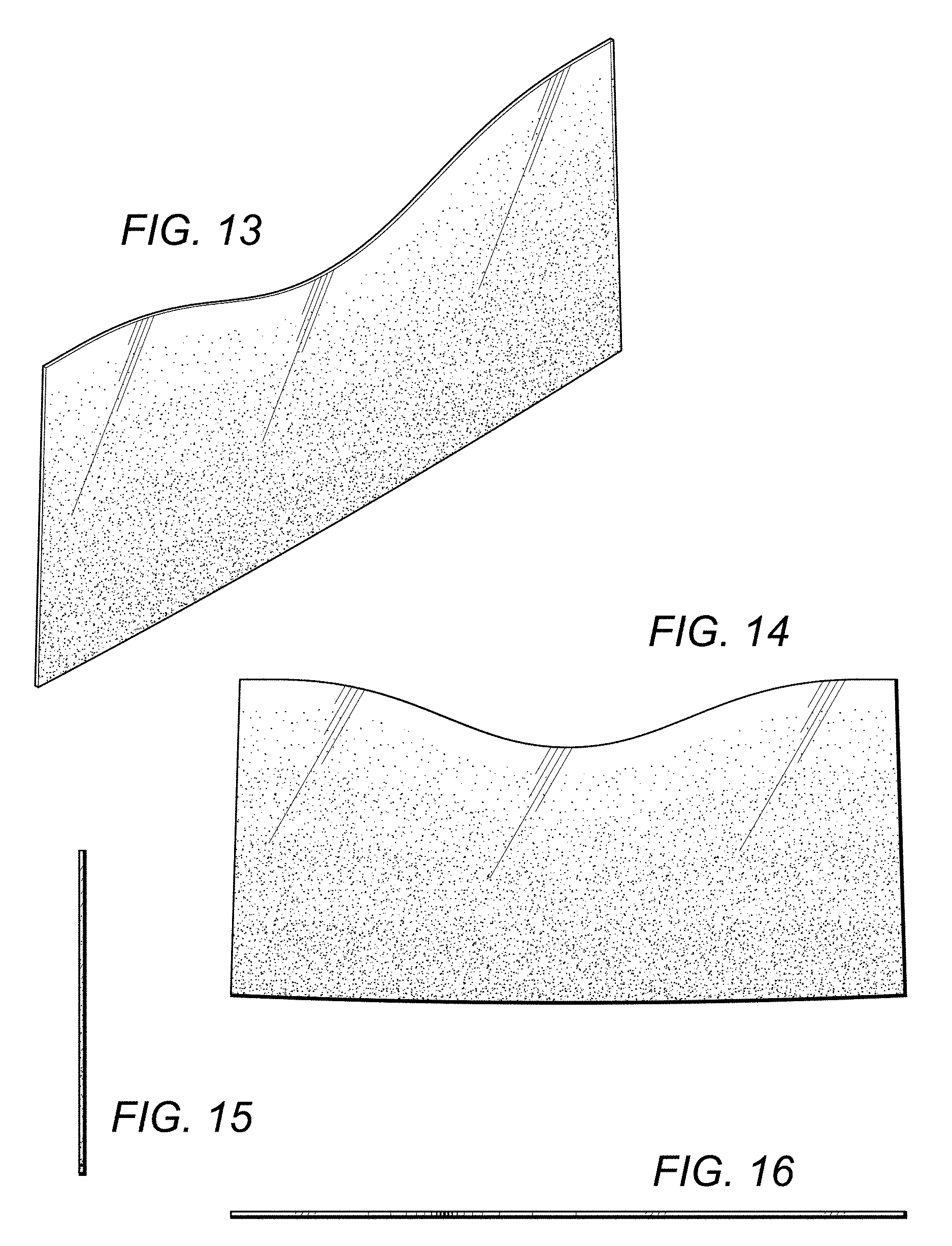Candle wrap with transparency gradient
Thompson Feb
U.S. patent number D841,196 [Application Number D/548,620] was granted by the patent office on 2019-02-19 for candle wrap with transparency gradient. The grantee listed for this patent is Peter Thompson. Invention is credited to Peter Thompson.






| United States Patent | D841,196 |
| Thompson | February 19, 2019 |
Candle wrap with transparency gradient
Claims
CLAIM The ornamental design for a candle wrap with transparency gradient, as shown and described.
| Inventors: | Thompson; Peter (Huntington Beach, CA) | ||||||||||
|---|---|---|---|---|---|---|---|---|---|---|---|
| Applicant: |
|
||||||||||
| Appl. No.: | D/548,620 | ||||||||||
| Filed: | December 15, 2015 |
| Current U.S. Class: | D26/23; D9/713 |
| Current International Class: | 2601 |
| Field of Search: | ;D26/9,10,23 ;D5/7,10,63,99 ;D9/433,434,444,499,401,702,711,713 |
References Cited [Referenced By]
U.S. Patent Documents
| 3286492 | November 1966 | Frazier, Jr. |
| D438563 | March 2001 | Webb |
| D442627 | May 2001 | Webb |
| D444953 | July 2001 | Marecki |
| D446946 | August 2001 | Shusta |
| 6406290 | June 2002 | Chon |
| D553675 | October 2007 | Hogg |
| D569423 | May 2008 | Lasch |
| D587366 | February 2009 | Turkat |
| D587907 | March 2009 | Vandenberg |
| D594663 | June 2009 | Vandenberg |
| D625614 | October 2010 | Duhon |
| D659268 | May 2012 | Vincenzetti |
| D662785 | July 2012 | Kern |
| D675106 | January 2013 | Powers |
| D675442 | February 2013 | Hawkins |
| D678764 | March 2013 | Powers |
| D706630 | June 2014 | Merchant |
| D736086 | August 2015 | Markle |
| D739241 | September 2015 | Markle |
| D751386 | March 2016 | Markle |
| D751387 | March 2016 | Markle |
| D751390 | March 2016 | Markle |
| D766366 | September 2016 | Canaday |
| 2001/0043467 | November 2001 | Carpenter |
| 2002/0179617 | December 2002 | Barthlow |
Assistant Examiner: Frank; Keith
Attorney, Agent or Firm: Umberg Zipser LLP
Description
FIG. 1 is a perspective view of a first embodiment of a candle wrap with a transparency gradient.
FIG. 2 is a front view of a first embodiment of a candle wrap with a transparency gradient, which is visually the same as the back view of the same embodiment.
FIG. 3 is a right side view of a first embodiment of a candle wrap with a transparency gradient, which is visually the same as the left side view of the same embodiment.
FIG. 4 is a top view of a first embodiment of a candle wrap with a transparency gradient, which is visually the same as the bottom view of the same embodiment.
FIG. 5 is a perspective view of a second embodiment of a candle wrap with a transparency gradient.
FIG. 6 is a front view of a second embodiment of a candle wrap with a transparency gradient, which is visually the same as the back view of the same embodiment.
FIG. 7 is a right side view of a second embodiment of a candle wrap with a transparency gradient, which is visually the same as the left side view of the same embodiment.
FIG. 8 is a top view of a second embodiment of a candle wrap with a transparency gradient, which is visually the same as the bottom view of the same embodiment.
FIG. 9 is a perspective view of a third embodiment of a candle wrap with a transparency gradient.
FIG. 10 is a front view of a third embodiment of a candle wrap with a transparency gradient, which is visually the same as the back view of the same embodiment.
FIG. 11 is a right side view of a third embodiment of a candle wrap with a transparency gradient, which is visually the same as the left side view of the same embodiment.
FIG. 12 is a top view of a third embodiment of a candle wrap with a transparency gradient, which is visually the same as the bottom view of the same embodiment.
FIG. 13 is a perspective view of a fourth embodiment of a candle wrap with a transparency gradient.
FIG. 14 is a front view of a fourth embodiment of a candle wrap with a transparency gradient, which is visually the same as the back view of the same embodiment.
FIG. 15 is a right side view of a fourth embodiment of a candle wrap with a transparency gradient, which is visually the same as the left side view of the same embodiment.
FIG. 16 is a top view of a fourth embodiment of a candle wrap with a transparency gradient, which is visually the same as the bottom view of the same embodiment.
FIG. 17 is a perspective view of a fifth embodiment of a candle wrap with a transparency gradient.
FIG. 18 is a front view of a fifth embodiment of a candle wrap with a transparency gradient, which is visually the same as the back view of the same embodiment.
FIG. 19 is a right side view of a fifth embodiment of a candle wrap with a transparency gradient, which is visually the same as the left side view of the same embodiment; and,
FIG. 20 is a top view of a fifth embodiment of a candle wrap with a transparency gradient, which is visually the same as the bottom view of the same embodiment.
The dominant feature of my design resides in the transparency gradient of a candle wrap. In addition, the bottom edge of the wrap has a slight radius, as seen in FIGS. 2, 6, 10, 14, and 18. Moreover, FIGS. 1-20 all conform to a first shape. Each of the embodiments has a different opacity gradient, where each individual embodiment transitions from fully transparent at the top, to fully opaque some distance down from the top.
* * * * *
D00000

D00001

D00002

D00003

D00004

D00005

XML
uspto.report is an independent third-party trademark research tool that is not affiliated, endorsed, or sponsored by the United States Patent and Trademark Office (USPTO) or any other governmental organization. The information provided by uspto.report is based on publicly available data at the time of writing and is intended for informational purposes only.
While we strive to provide accurate and up-to-date information, we do not guarantee the accuracy, completeness, reliability, or suitability of the information displayed on this site. The use of this site is at your own risk. Any reliance you place on such information is therefore strictly at your own risk.
All official trademark data, including owner information, should be verified by visiting the official USPTO website at www.uspto.gov. This site is not intended to replace professional legal advice and should not be used as a substitute for consulting with a legal professional who is knowledgeable about trademark law.